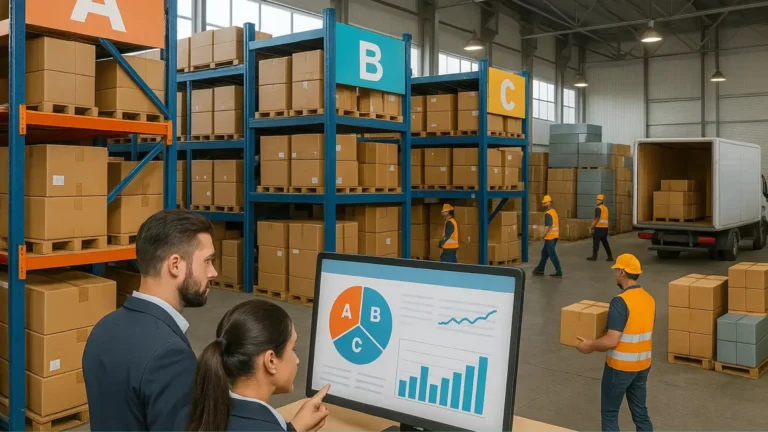Top Metrics Every CEO Should Track in In-House Logistics Operations

In-House Logistics Operations
In-house logistics is no longer a cost center—it’s a boardroom issue. Every shipment, every delay, every inefficiency has a direct impact on revenue, margins, and customer loyalty. Yet many CEOs still rely on outdated KPIs or vanity dashboards.
The result? Blind spots that quietly drain profits. The real question is: are you tracking the metrics that actually matter?
Which Metrics Truly Drive Operational Excellence?
Not all metrics are created equal. CEOs don’t need hundreds of KPIs; they need a handful of high-impact metrics that link logistics directly to profitability, resilience, and customer satisfaction. These can be grouped into four pillars:
1. Efficiency Metrics
Measure how well operations flow inside your logistics network.
- Dock-to-Stock Cycle Time – Speed of moving inbound goods into usable inventory.
- Warehouse Labour Productivity – Units handled per labour hour, showing ROI on manpower and automation.
- Transportation Utilization – Are vehicles running at full capacity or half empty? Leading providers like Navata Road Transportation demonstrate how route optimization and fleet utilization cut costs and increase reliability.
2. Customer Experience Metrics
Track the promises you make—and keep—to customers.
- Order Accuracy Rate – Errors directly translate to churn and costly returns.
- On-Time Delivery Percentage – A single missed delivery can damage trust and contracts.
- Perfect Order Rate – Accuracy, timeliness, and condition combined—the true measure of reliability.
- Damage & Claims Ratio – Every damaged order is both a financial loss and a trust deficit. Industry leaders like VRL Logistics show how consistent delivery excellence strengthens customer loyalty.
3. Financial Metrics
Ensure logistics is fueling growth, not draining profits.
- Inventory Turnover – Is capital stuck in warehouses or flowing into revenue?
- Cost per Shipment – Beyond transport, hidden handling and storage costs must be controlled.
- Freight Cost as % of Sales – Logistics should scale proportionally with revenue, not faster.
- Logistics Spend vs. Budget – Simple but essential: Is logistics an investment or a runaway expense? Companies such as Navata Supply Chain Solutions illustrate how integrated solutions help track and control operational costs effectively.
4. Sustainability Metrics
Because the boardroom—and regulators—are watching environmental performance.
- Carbon Emissions per Shipment – A critical measure of environmental impact and compliance.
What Happens If You Don’t Track These?
Ignoring logistics metrics isn’t neutral—it’s expensive. CEOs who fail to monitor the right numbers risk:
- Revenue leakage from inefficiencies and rework
- Escalating costs that scale faster than sales growth
- Customer churn because promises aren’t being kept
- Operational blind spots that make quick pivots impossible
Ask yourself: how much profit is slipping through the cracks simply because it isn’t being tracked?
What Should CEOs Expect From In-House Logistics?
It isn’t about adding flashy dashboards or drowning in data. It’s about demanding capabilities that connect logistics performance directly to strategy:
- Real-Time Visibility – From warehouse to last mile, CEOs need a live view of where money and goods are moving.
- Predictive Analytics – Spot risks before they escalate into service failures or cost overruns.
- Automation of Core Processes – Eliminate repetitive errors and speed up execution.
- Cross-Functional Alignment – Logistics data must inform finance, sales, and customer service—not operate in isolation.
As CEOs demand greater integration and efficiency, understanding how these capabilities translate into rapidly evolving markets is critical. Learn more about The Rise of E-commerce Logistics: Challenges & Opportunities and how Logistics strategies can adapt to meet growing consumer demands.
The Bottom Line
Logistics has become the silent differentiator. The companies that measure it intelligently will lead with agility, protect their margins, and win customer loyalty. The ones that don’t? They’ll wake up to shrinking profits and boardroom questions they can’t answer.
So let’s flip the script: Are you leading logistics—or is logistics quietly leading you?





